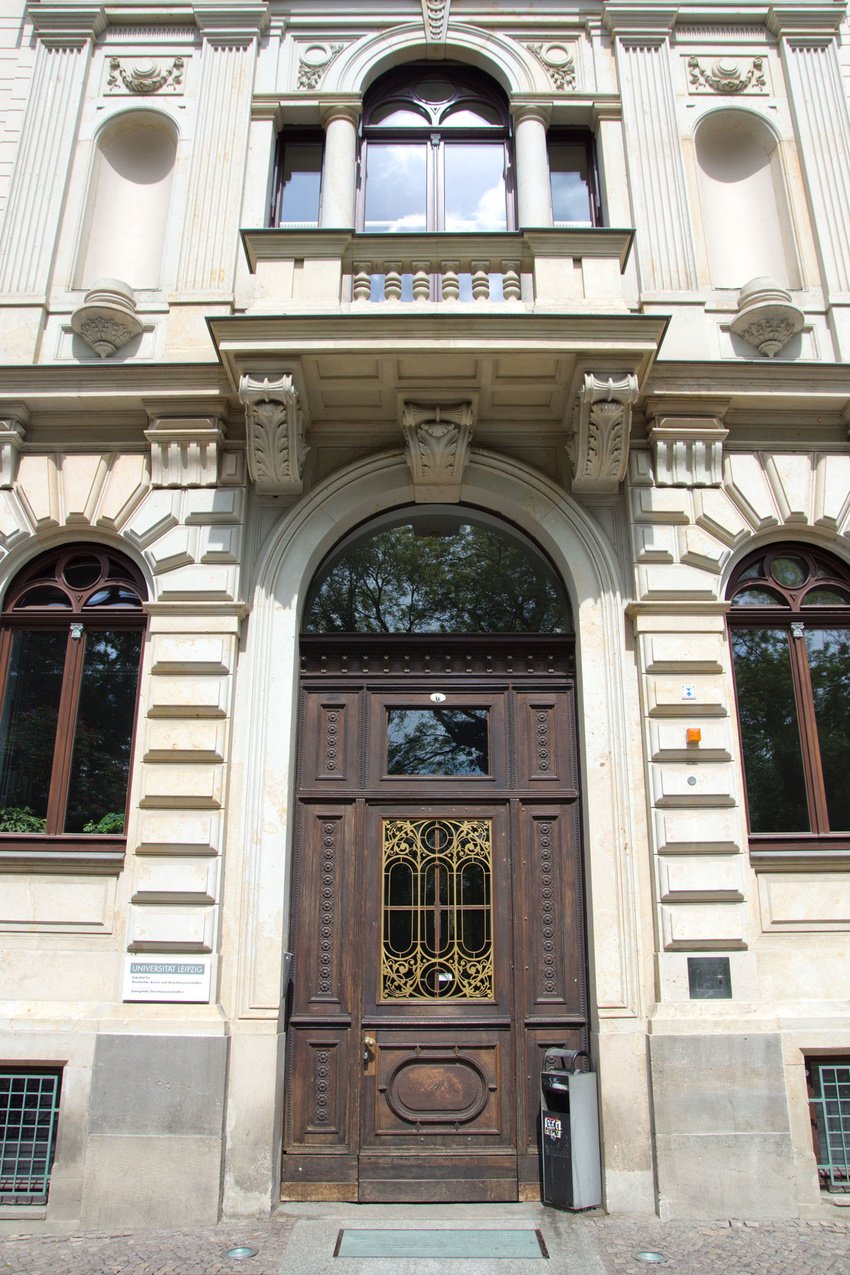#7113. Neoclassical Facade of Leipzig University with Rich Architectural Decoration

Before us stands an expressive example of classical architecture with Neo-Renaissance elements, embodied in the facade of the Leipzig University building. The facade demonstrates a harmonious combination of monumentality and elegance, characteristic of academic architecture of the 19th century.
The composition of the facade is strictly symmetrical and hierarchical. The central entrance is accentuated by an arched portal with massive wooden doors, adorned with panels and exquisite wrought-iron grillwork featuring geometric ornaments in the upper section. Above the entrance is a balcony with a balustrade, supported by decorative corbels with floral ornaments, creating an expressive play of light and shadow.
Vertical articulations of the facade are formed by fluted pilasters, which give the building rhythm and visual stability. The first-floor window openings have semicircular tops and are framed with casings that enhance the plasticity of the facade. The second floor features a tall arched window with an elegant pattern of mullions, flanked by circular niches.
The facade gains particular expressiveness through rich decoration: sculpted cartouches, capitals, and friezes with floral motifs. The color scheme is restrained – light stone tones contrast with the dark wood of the doors, emphasizing the classical austerity of the building.
When designing a facade for a private home, some techniques from this architecture can be creatively adapted: symmetrical composition, accentuating the entrance with a portal, using pilasters or columns for rhythmic articulation, and incorporating balustrades and decorative corbels. Even on the scale of private construction, these elements can impart nobility and monumentality characteristic of classical architecture.